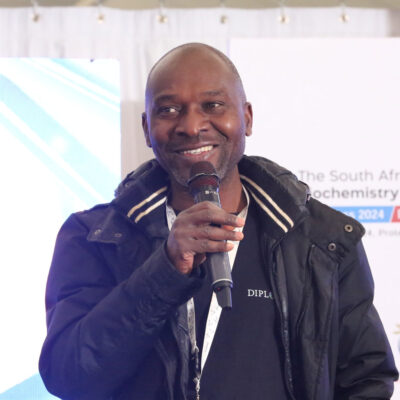1485676
{1485676:IT98693A}
1
vancouver
50
default
349
https://biophysicsworkshop.co.za/wp-content/plugins/zotpress/
%7B%22status%22%3A%22success%22%2C%22updateneeded%22%3Afalse%2C%22instance%22%3Afalse%2C%22meta%22%3A%7B%22request_last%22%3A0%2C%22request_next%22%3A0%2C%22used_cache%22%3Atrue%7D%2C%22data%22%3A%5B%7B%22key%22%3A%22IT98693A%22%2C%22library%22%3A%7B%22id%22%3A1485676%7D%2C%22meta%22%3A%7B%22creatorSummary%22%3A%22Shonhai%22%2C%22numChildren%22%3A1%7D%2C%22bib%22%3A%22%26lt%3Bdiv%20class%3D%26quot%3Bcsl-bib-body%26quot%3B%20style%3D%26quot%3Bline-height%3A%201.35%3B%20%26quot%3B%26gt%3B%5Cn%20%20%26lt%3Bdiv%20class%3D%26quot%3Bcsl-entry%26quot%3B%20style%3D%26quot%3Bclear%3A%20left%3B%20%26quot%3B%26gt%3B%5Cn%20%20%20%20%26lt%3Bdiv%20class%3D%26quot%3Bcsl-left-margin%26quot%3B%20style%3D%26quot%3Bfloat%3A%20left%3B%20padding-right%3A%200.5em%3B%20text-align%3A%20right%3B%20width%3A%201em%3B%26quot%3B%26gt%3B1.%26lt%3B%5C%2Fdiv%26gt%3B%26lt%3Bdiv%20class%3D%26quot%3Bcsl-right-inline%26quot%3B%20style%3D%26quot%3Bmargin%3A%200%20.4em%200%201.5em%3B%26quot%3B%26gt%3BShonhai%20A.%20Biophysics%20in%20Africa%3A%20Investigation%20of%20the%20structure-function%20specialisation%20of%20Hsp70%20chaperone%20machines%20of%20the%20main%20agent%20of%20malaria%2C%20Plasmodium%20falciparum%20-%20presented%20by%20Prof.%20Addmore%20Shonhai.%20%5Bcited%202025%20Oct%2020%5D%3B%20Available%20from%3A%20%26lt%3Ba%20class%3D%26%23039%3Bzp-ItemURL%26%23039%3B%20href%3D%26%23039%3Bhttps%3A%5C%2F%5C%2Fcassyni.com%5C%2Fevents%5C%2FCYy769JSKwtsWhVF5YMM73%26%23039%3B%26gt%3Bhttps%3A%5C%2F%5C%2Fcassyni.com%5C%2Fevents%5C%2FCYy769JSKwtsWhVF5YMM73%26lt%3B%5C%2Fa%26gt%3B%26lt%3B%5C%2Fdiv%26gt%3B%5Cn%20%20%26lt%3B%5C%2Fdiv%26gt%3B%5Cn%26lt%3B%5C%2Fdiv%26gt%3B%22%2C%22data%22%3A%7B%22itemType%22%3A%22journalArticle%22%2C%22title%22%3A%22Biophysics%20in%20Africa%3A%20Investigation%20of%20the%20structure-function%20specialisation%20of%20Hsp70%20chaperone%20machines%20of%20the%20main%20agent%20of%20malaria%2C%20Plasmodium%20falciparum%20-%20presented%20by%20Prof.%20Addmore%20Shonhai%22%2C%22creators%22%3A%5B%7B%22creatorType%22%3A%22author%22%2C%22firstName%22%3A%22Addmore%22%2C%22lastName%22%3A%22Shonhai%22%7D%5D%2C%22abstractNote%22%3A%22Abstract%20not%20yet%20added.%22%2C%22date%22%3A%22%22%2C%22language%22%3A%22en%22%2C%22DOI%22%3A%22%22%2C%22ISSN%22%3A%22%22%2C%22url%22%3A%22https%3A%5C%2F%5C%2Fcassyni.com%5C%2Fevents%5C%2FCYy769JSKwtsWhVF5YMM73%22%2C%22collections%22%3A%5B%22EENXQ3XN%22%5D%2C%22dateModified%22%3A%222025-10-20T11%3A36%3A31Z%22%7D%7D%5D%7D
1.
Shonhai A. Biophysics in Africa: Investigation of the structure-function specialisation of Hsp70 chaperone machines of the main agent of malaria, Plasmodium falciparum – presented by Prof. Addmore Shonhai. [cited 2025 Oct 20]; Available from:
https://cassyni.com/events/CYy769JSKwtsWhVF5YMM73
Malaria remains a major killer disease whose main victims are communities living in the sub-Saharan African region. Its main victims are children (<5 years) and pregnant mothers. One of the key constraints towards malaria eradication and control is drug resistance. Malaria is caused by members of the Plasmodium genus of which P. falciparum causes the most lethal form of the disease. Heat shock proteins (Hsps) are proteins that assist other proteins attain their folded functional structures (for this reason they’re are referred to as molecular chaperones).
Consequently, they play an important role in assisting mutated proteins override the fitness cost associated with their new conformational demands. As such, Hsps are implicated in drug resistance. The development of clinical malaria is associated with export of nearly 10% of the parasite proteome to the infected host red blood cell. The exported parasite proteins play an important role in modifying the infected host red blood cell, leading to malaria pathology. Hsps constitute a huge fraction of the exported parasite proteins.
Several Hsps of the parasite are essential. One of these, Hsp70, plays an essential role in the development of the parasite. In addition, P. falciparum Hsp70 is a potential antimalarial drug target and an ideal candidate in combination therapies in light of its role in antimalarial drug resistance. However, the main set-back in targeting Hsp70 in antimalarial drug design efforts is that it is a highly conserved protein.
Our team is interested in understanding the features of Hsp70 that account for its functional specialisation across species. In our studies, we have focused on PfHsp70 along with its homologues from other species. Here, I present data on our understanding of this protein that we gleaned using various tools including but not limited to, circular dichroism, fluoresence spectrometry, biochemical- and cell-biology assays.

